|
8/30/2017 0 Comments Short Story Review: Poe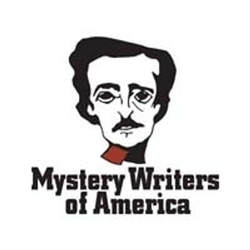 At Killer Nashville, I was in the audience for a panel titled You've Got 5,000 Words: How to Write Short Stories. At one point, the panelists were asked to name their favorite short story. Of course no one could pick just one story. Both Bob Mangeot and Warren Moore listed The Cask of Amontillado, by Edgar Allen Poe, among their favorites. Inspired by the knowledge level of the panelists, I decided it was time for me to delve into the classics. Poe is an excellent author to examine, as he is often credited with inventing the detective story. He is the symbol of the Mystery Writers of America. I pulled my college American literature book off the shelf, and found The Cask of Amontillado. There is no mystery, as the narrator delivers his intentions in the first paragraph. The narrator desires revenge "with impunity" for the many insults Fortunato has dealt him. He's thought about this a long time, and has come up with a plan. The reader follows the two men into a wine cellar, and then into the depths of catacombs, searching for that cask of Amontillado. The Cask of Amontillado is a lesson in proper short story writing. Note two dialogue exchanges with few dialogue tags (he said, I said). They are not needed, as the reader can readily tell which person is speaking. Everything about the story is trim and to the point. Descriptions? Spare at best. And yet the gloomy, dreadful atmosphere is painfully clear. I had read the story ages ago, and remembered the ending. That's not the important part. It's the getting there that is so creepy. We've all been insulted by obnoxious people, and perhaps even dreamed of avenging ourselves. This guy goes way over the top. I think the best part of the writing is being so thoroughly in the narrator's mind, while Fortunato happily blunders into the cunning trap. Maybe you read The Cask of Amontillado as an assignment in English class. Maybe you somehow missed this gem. In either case, I strongly suggest you read, then re-read this story. And what is Amontillado, by the way? A Spanish sherry wine.
0 Comments
8/29/2017 0 Comments Killer Nashville: Morning, Day One Road Trip! Writers often choose which conferences to attend based on whether they have seen the city where the event is located, hoping to combine sightseeing with business. I had never been to Killer Nashville. My husband has never accompanied me to a writers’ conference. He decided it would be fun for us to drive from Colorado to Nashville. Kind of a last chance to have a vacation before he starts a new job. During the drive from Colorado to Tennessee, we gawked at the sights, dreaming of the day when we retire, and can do a trip like this at a leisurely pace. It was a two-day drive, and we stopped outside Kansas City for the night. We rolled into the conference hotel Thursday night, too late to take part in the Southeast Mystery Writers of America Ready Set Pitch. I did wander by the Sisters in Crime gathering in the bar, offering travel-glazed greetings before crashing for the night. 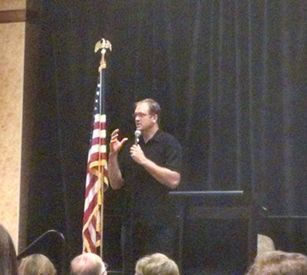 Steven James Steven James Friday morning, we went to the free breakfast buffet in the venue hotel, the Embassy Suites. This was no ordinary hotel breakfast of bagels, coffee, and warmed-over eggs. A cook dazzled with made-to-order omelets. Bowls of fresh fruit and a slow-cooker of oatmeal offered healthy options. 8:00 Friday August 25 – Opening Keynote Speech - Throw Your Hat Over the Wall Steven James delivered a motivational speech. He read rejection letters, which is always entertaining and encouraging for writers. We’ve all received the letters he described. His record-breaker rejection letter came seven years and four months after his submission. The speech set the right tone for me. It’s easy to get caught up in reaching for the next goal, rather than celebrating where I am right now. James advised that writers be satisfied with our quiet accomplishments. The title of his talk referred to reaching what seems to be an insurmountable obstacle. The advice is to throw your hat over the wall. Then you have no choice but to find your way over the wall. In a startling bit of advice, he suggested most of the audience is writing too much. Write 300 words a day, he suggested, for 300 days a year. At the end, you will have a 90,000 word manuscript. Best quotes: Be satisfied with quiet accomplishments. Don’t compare yourself to someone else. You were made for a reason. You were made to soar. 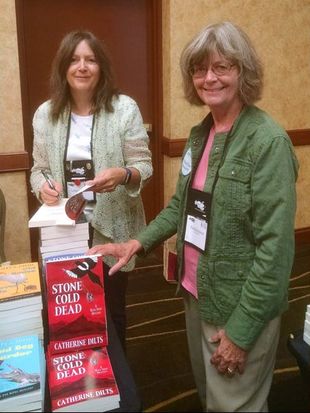 Catherine Dilts and Mary Davidsaver in the Killer Nashville book store Catherine Dilts and Mary Davidsaver in the Killer Nashville book store I hadn’t attended a conference in over a year, but it didn’t take long for me to get back into conference mode. I was happy to see authors I knew, and to meet new folks. Killer Nashville generously placed me on several panels. I was also given slots for book signing in the conference bookstore. Here’s a bit of advice, and don’t just take it from me. My publisher sent plenty of book one and two in my series. They didn’t send book one, and that’s the book people wanted. Happily, I had brought copies of Stone Cold Dead, which sold better than I expected. I heard from other authors who had experienced arriving at book signings elsewhere only to learn the book store had not acquired any copies of the book to be signed. Their advice, and mine, is to always bring copies of your book, just in case. 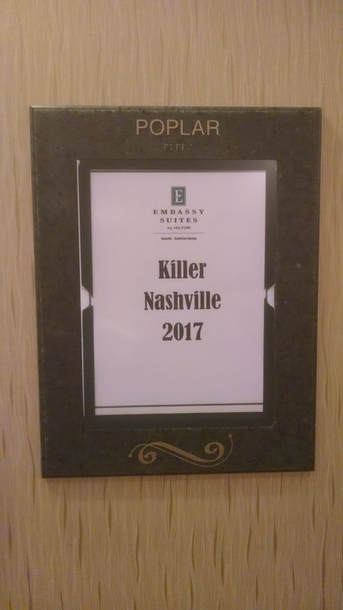 8:40 Friday August 25 – Panel – Creating and Weaving Subplots Kelly Oliver – moderator; Paula Benson, Mary Davidsaver, Susan Page Davis, Tracee de Hahn, Rick Helms After delivering books to the conference bookstore, I attended a panel on subplots. Authors discussed how they create and use subplots in their fiction. Here are selected quotes: Paula Benson – Secondary characters can bring out the background of, and add complications to, the main character’s plotline. Rick Helms – In a techno-thriller, a subplot showing the affect of the main plot on people can add a humanizing element, and draw readers in. Susan Page Davis described how she used subplots in the conclusion of a series to lead to the main mystery. Mary Davidsaver does not plan out the subplots. She is a pantser – a seat-of-your-pants writer, and found NaNoWriMo useful to complete her novel. Tracee de Hahn also described herself as a pantser, and said her subplots come out as she writes. She agreed with Rick that subplots draw readers in. She has a character that never appears in her novels, and yet the subplot of this minor character seems to resonate with readers. Kelly Oliver believes writers can create powerful moments in a novel when the subplots and the main plot connect. 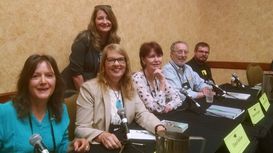 Panel: Time Management Panel: Time Management 9:40 Friday August 25 – Panel – You Don’t Have Time NOT to Write: Time Management for Authors Dana Chamblee Carpenter – moderator; Andy Davidson, Catherine Dilts, Cheryl Hollon, Bruce Meisterman, Maureen Sappey On this panel, we offered encouragement to writers with busy lives, and strategies for time management. I was a panelist, and did not take notes, so I’ll try to summarize the main points. After introductions, giving our writing credentials and describing our time constraints, Dana asked what kinds of barriers we use to protect our writing time. I described how I get up between 5 – 5:30 am and write before I go to work. I also use noise-cancelling headphones and the free internet radio service Pandora to block out household noises. Other authors on the panel were able to establish their own writing space in their homes. One panelist converted her husband’s no-longer-used backyard wood working shop into her writing office. Panelists suggested setting habits and routines for writing. For those with day jobs, there are moments of “found time” in a day. Writing over the lunch break, or editing when there is downtime, can squeeze a few extra minutes of creative time into a day. Dana asked what sacrifices panelists make to fit in writing time. All agreed that television viewing was dramatically curtailed. Socializing, chatty phone calls, and time on social media were also sacrificed to make more time for writing. One panelist gave up time he spent participating in sports for writing. When it came to the specifics of time management, panelists had different methods for ensuring how their time was spent. I use an Excel spreadsheet to track my hours, while others set daily word counts. Whatever the approach, all agreed that to write, sacrifices have to be made, and schedules have to be set. My first day at Killer Nashville began with inspiration, instruction, and meeting fellow writers. I’ll continue next week with Friday afternoon, and a Killer short story panel. Her Infinite Variety by B. K. Stevens
The Detectives http://www.bkstevensmysteries.com/book/her-infinite-variety/ My husband decided to accompany me to the Killer Nashville conference. Driving was much cheaper than flying, especially times two. A Kindle or other e-reader is essential for travel. You can carry your entire library in the space of one trade paperback. Reading or listening to fiction has become a tradition on our road trips. Fortunately for us, I had loaded a short story collection by B. K. Stevens before we left town. I have read several of Stevens’ stories in Alfred Hitchcock Mystery Magazine. After her recent passing, I learned she had released a 2016 anthology of her short fiction, Her Infinite Variety. I read aloud The Detectives while my husband drove across Kansas. We both laughed out loud at certain lines and situations. The story was thoroughly entertaining, and like other B. K. Stevens stories, I thought about the characters long after The End. Iphigenia Woodhouse had sacrificed her life to care for her elderly mother. Professor Minerva Woodhouse has issues. She is eccentric and pretty obnoxious, with a habit of calling her daughter a “nasty girl.” When Harriet Russo arrives, fresh from college and eager to apprentice with a real PI, she is assigned two tasks: Follow a sad sack poor-little-rich-girl home from high school, and win Mother’s approval. Spoiler alert, sort of: Harriet is an outsider to the mother-daughter relationship, and swiftly figures out the dynamics. She also helps solve a crime. But perhaps most importantly, she wins the approval of both Iphigenia and her mother. You can probably dig up past issues of AHMM and the other magazines and anthologies containing Stevens’ stories, but this collection offers something unique. Stevens introduces the collection with a thoughtful essay, then gives the insider scoop at the end of each story. These give insight to the mind of a great writer. We anticipate being thoroughly entertained all the way to Nashville. 8/21/2017 0 Comments Killer Nashville 2017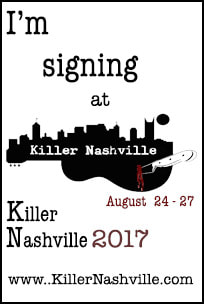 I am heading to Killer Nashville soon! This will be my first year attending the writers conference. I am on several panels, so I'll be busy. Why Killer Nashville? I know a few people who have attended in the past, and they were delighted by the conference. Plus, I haven't been to Nashville, and it sounds like a fun place to visit. While this will be a working trip, I also hope to relax and unwind after completing two writing goals. I sent a short story to the Blood and Gasoline anthology edited by Mario Acevedo. This tale is a departure from my more typical cozy-style stories. Hex Publishers is known for horror and noir. The anthology will be released in late spring 2018. My second project was polishing a novel to submit to a cozy mystery publisher. I hit "send" Sunday morning. Submitting a novel to agents or editors is always nerve-wracking. Now I'm in the wait and see mode. Writing is a solitary endeavor. Conferences offer a chance to meet authors in person, talk shop, and enjoy professional enrichment. 8/18/2017 0 Comments B. K. Stevens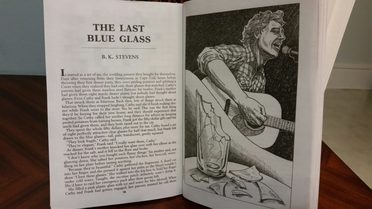 I am saddened to announce the passing earlier this week of a great mystery author, B. K. Stevens. She left us too soon. Rather than posting my usual short story review, please read this author's work and form your own opinion. A Derringer Award winner, her mysteries are of literary quality. She appeared frequently in Alfred Hitchcock Mystery Magazine. I wrote her a fan letter for her story, The Last Blue Glass. B. K. responded that she saved all her fan letters, to re-read at moments when she was discouraged. You can find the link to The Last Blue Glass here. I have no doubt she will be remembered. 8/15/2017 0 Comments Summer Reading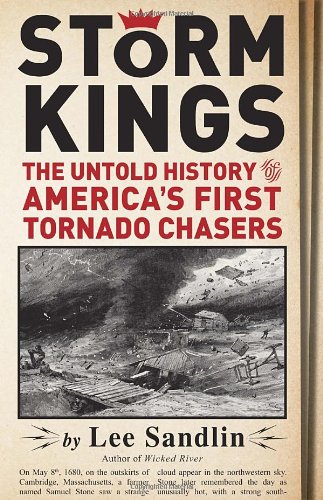 I picked up a non-fiction book to research Midwestern storms for a novel I'm drafting. Storm Kings by Lee Sandlin is unexpectedly entertaining. I'm learning fascinating details of American history, as well as the development of American meteorology. I hope to never encounter a pyrocumulonimbus cloud. One appeared in 1871, formed a fiery tornado, and lay waste to a Wisconsin town. The survivors thought they were witnessing the finger of God, and the end of the world. I watched a Colorado storm last year that nearly dropped me to my knees in fear and trembling. The thunder and lightning were relentless. There is true terror in being in the grips of a tremendous storm. Having spent eight years in Oklahoma, I experienced tornado season - the sky turning green, the thunder-boomer storm followed by an eerie silence. Thankfully, the tornadoes passed me by. My interest in crazy weather is being fueled by Sandlin's book. Expect to see a storm of Biblical proportions in one of my future stories. On the fiction side, I've been reading short stories from various sources. We listened to a middle grade novel on our drive to Texas - The Supernaturalist by Eoin Colfer, which kept us entertained for many miles. We started Tail Gait by Rita Mae Brown, but didn't finish it on our trip. I'm listening to it as I commute to work. I finished A Duty to the Dead by Charles Todd. I started reading Agatha Christie's The Murder at the Vicarage. We attended the Shakespeare in the Park production of Much Ado About Nothing. I don't usually get in this much literature in summer, especially one this busy. Audio books are a great way to add more "reading" to a busy schedule. 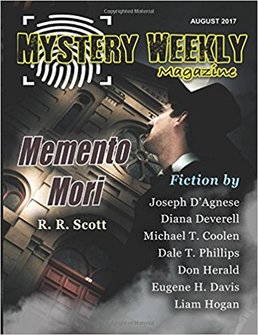 I explored the literary technique Voice in two previous blogs. This week, for my short story review, I found two stories with female narrators telling the tale in first person, but resulting in very different voices. Tourniquet by Liam Hogan is beautifully succinct. The short story appearing in the Mystery Weekly August 2017 issue is a little over 800 words. The narrator Jane claims she doesn't understand her boss's verbose instructions, but it's clear she knows exactly what happens in the office later that night. Opening lines: Charles Petheridge-Smythe sits on the edge of my desk. I listen. I do not understand. He uses too many words. Even his name has too many words. He talks around what he wants. In a completely different style, The Cycopaths by Judy Penz Sheluk appears in the Kings River Life July 29 issue. The author captures the competitive nature of a women's triathlon team. A much longer story at over 2,800 words, it flows just as nicely. These lines sum up the team: You might think a women's only triathlon club would be kinder and gentler than a mixed or all male group, but you'd be wrong. Get together any group of type-A personalities and there's bound to be some drama, especially if they're in the same five-year age bucket. A woman drowns, and the narrator ponders whether one of her teammates might have killed a potential competitor. Tourniquet uses first person narration and short, choppy sentences. The Cycopaths is also told in first person, with more traditional sentence structure and length. Although using very different story-telling styles, resulting in distinctive voices, both set up clues and suspects in traditional mystery style. 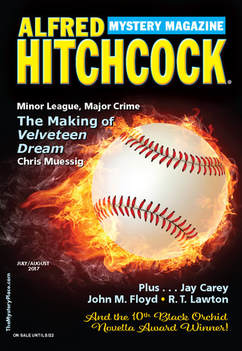 I read two stories this week involving tales of infidelity, and its consequences. The authors dealt with the same topic in very different ways. They provide good examples of how every story has been told, in a thematic sense, but authors can still bring fresh views to those themes. Serious Damage, by Cathryn Grant, almost had a Poe-like quality, as the reader learns about two women competing for the same man. Or are they? Melinda learns that coworker Caroline has a reputation for being delusional. "She's in her own world," other coworkers say of Caroline. When Caroline drops the bombshell that she's having an affair with Melinda's boyfriend, Melinda doesn't believe her. The storytelling is in the moment, emotionally intimate, and from Melinda's somewhat unreliable point of view. The Magnolia Murders, by O'Neil De Noux, involves infidelity in the past tense. In fact, the story is told as a flashback, opening with a question, telling the story, and ending where it began - with an answer to the question. Wealthy businessman Franklin Fortesque VII is running for governor. He hires private detective Lucien Caye to solve two murders, and thus clear the path for his campaign. The problem is, the deceased are Fortesque's wife and her lover. In this story, the narrator is emotionally removed from the infidelity. He sympathizes with the star-crossed lovers. The case appears to have no solution, until Caye interviews the only witnesses, a stuttering little girl clutching a kitten, and Elvira the Goat Lady. Good storytelling can take a well-used theme and make it fresh. Both authors succeeded with these stories. 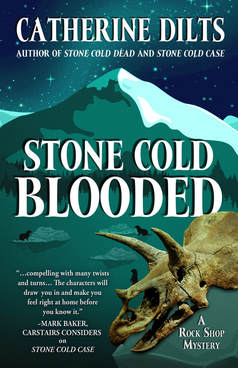 Today you can take a sneak peek at Stone Cold Blooded at Karen's Killer Book Bench here. Karen Docter writes romantic suspense, and hosts authors of that genre, as well as mystery, on her terrific blog. In the Sneak Preview, you can read a couple pages from the third book in my series. On Monday, I answered Karen's fun questions in an author interview, here. All three books in the Rock Shop Mystery series are available in e-book and paperback. Stone Cold Dead Stone Cold Case Stone Cold Blooded 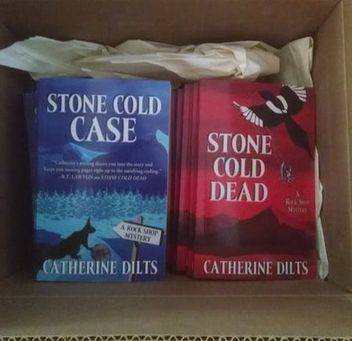 Paperbacks may also be purchased at independent bookstore Why Not Books? in Colorado Springs. Why Not Books? 5975 North Academy Boulevard Suite 204, Colorado Springs, CO 80918 We are open Monday – Saturday: 10:00am – 6:00pm Phone 719-426-2013 [email protected] |
Subscribe to this blog: |
Proudly powered by Weebly
 RSS Feed
RSS Feed